More Stories
We’re halfway through meteorological winter, but it feels like it hasn’t even started. Temperatures soared to 65 degrees in Islip on Jan. 4, the warmest on record for the date. And the warmth keeps coming. As of Jan. 12, this month is running 11 degrees above average, and Long Island has seen virtually no snow this winter. If this weather keeps up through the end of the month – and it looks like it could – it will be the warmest January on record for the Island.
Islip reported 0.4 inches of snow on Dec. 12, and that’s it this season – so far. If the Island doesn’t see snow next week, we’ll break into the top five for latest 1 inch+ first snows on record.
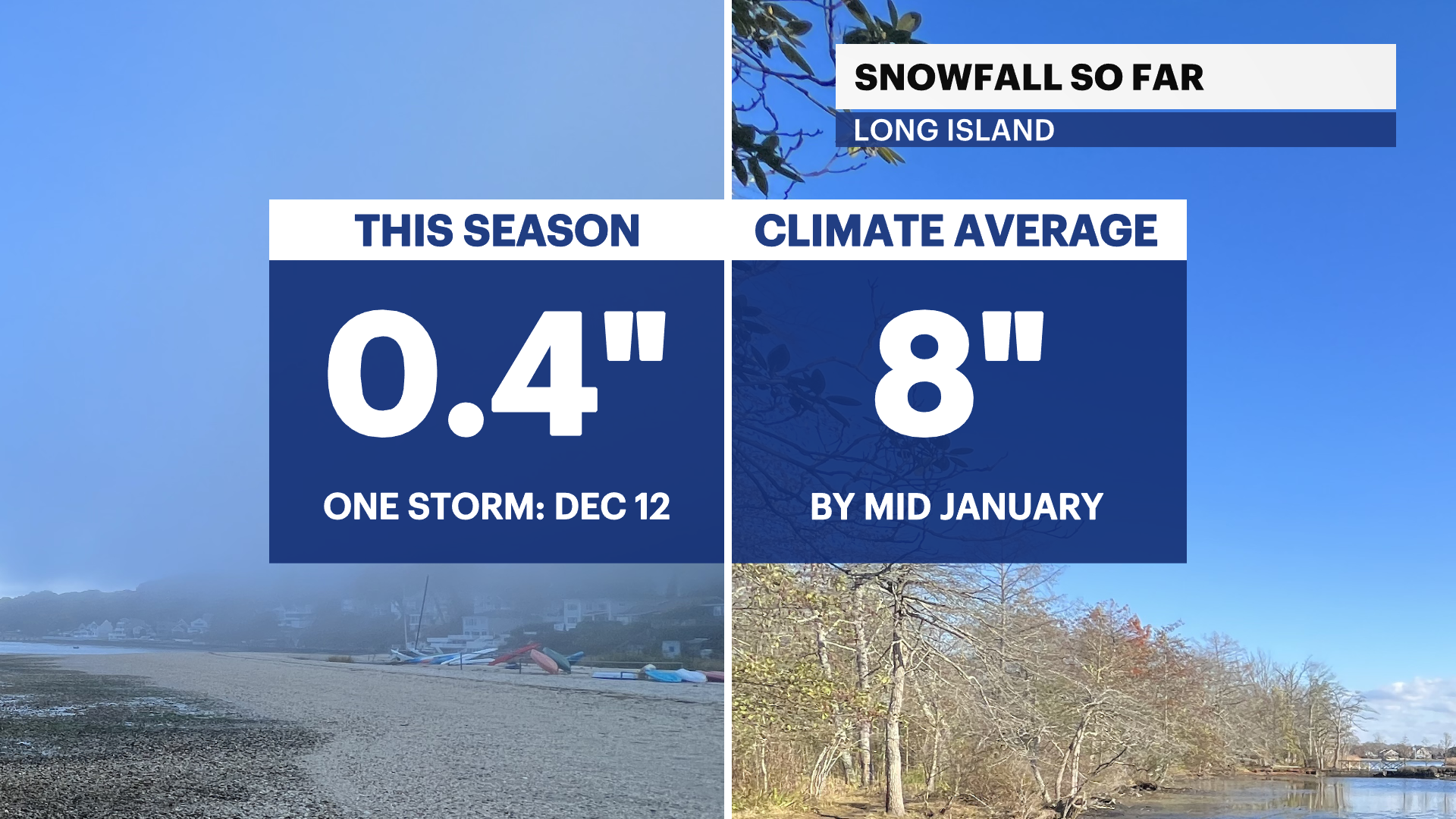
January 2012 had one of the latest first snows on record and was one of the least snowy winters overall. However that following fall, Long Island had it’s earliest 1 inch+ snow event on record.
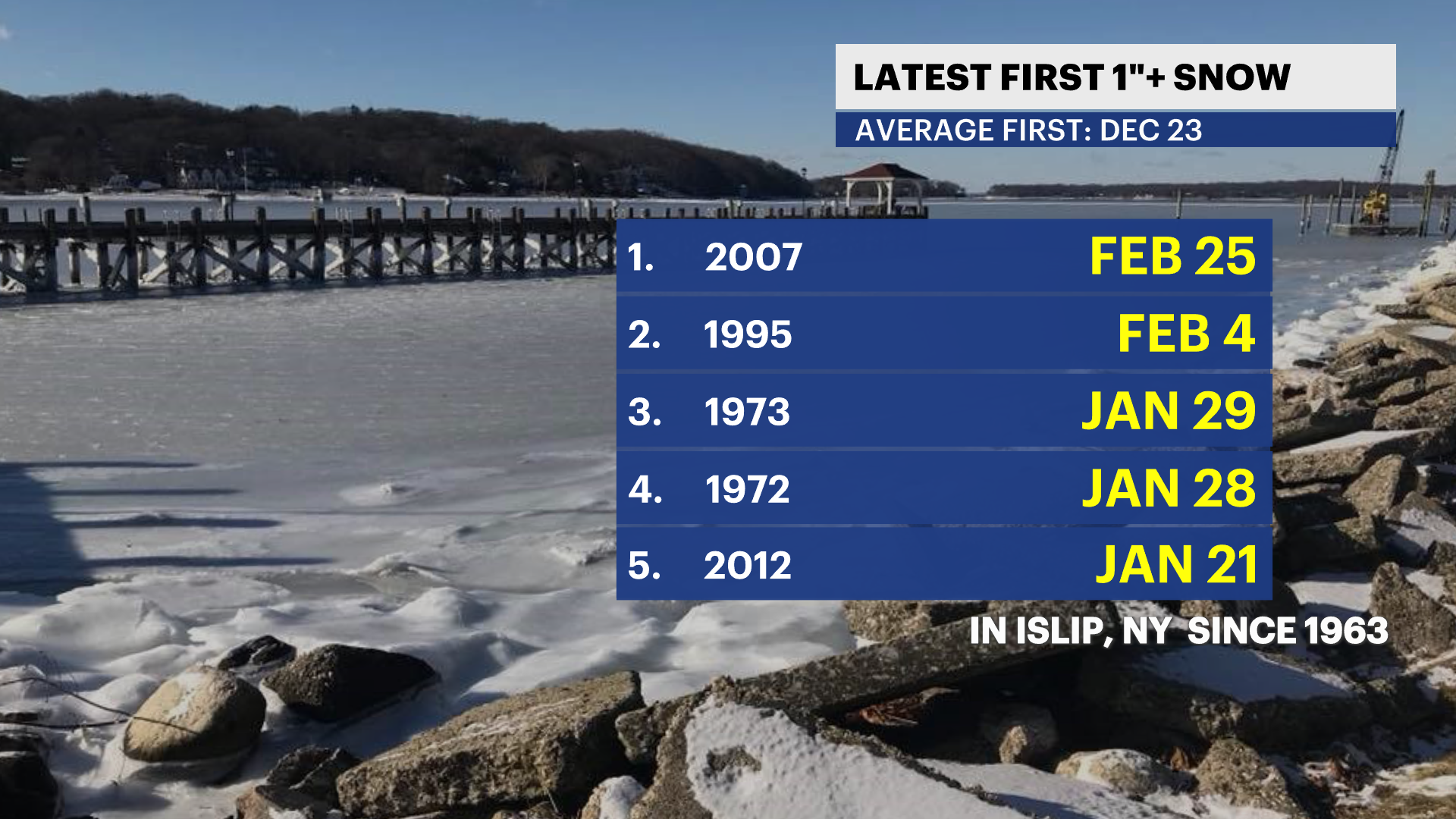
The latest first 1 inch snow on record is Feb. 25, 2007. That year produced only 9 inches of snow, but most of it fell in late February through mid March.
Snowstorms are hitting harder & later
In recent years, it’s hard not to notice that late winter is hitting harder than early winter. In the past 20 years, it’s clear the most snow is on the ground in late January through mid-February. Early March averages a bigger snow depth on the Island than early January. This may come as a surprise considering the days are nearly an hour longer in March than they are in January, but it’s a shift we’re noticing.
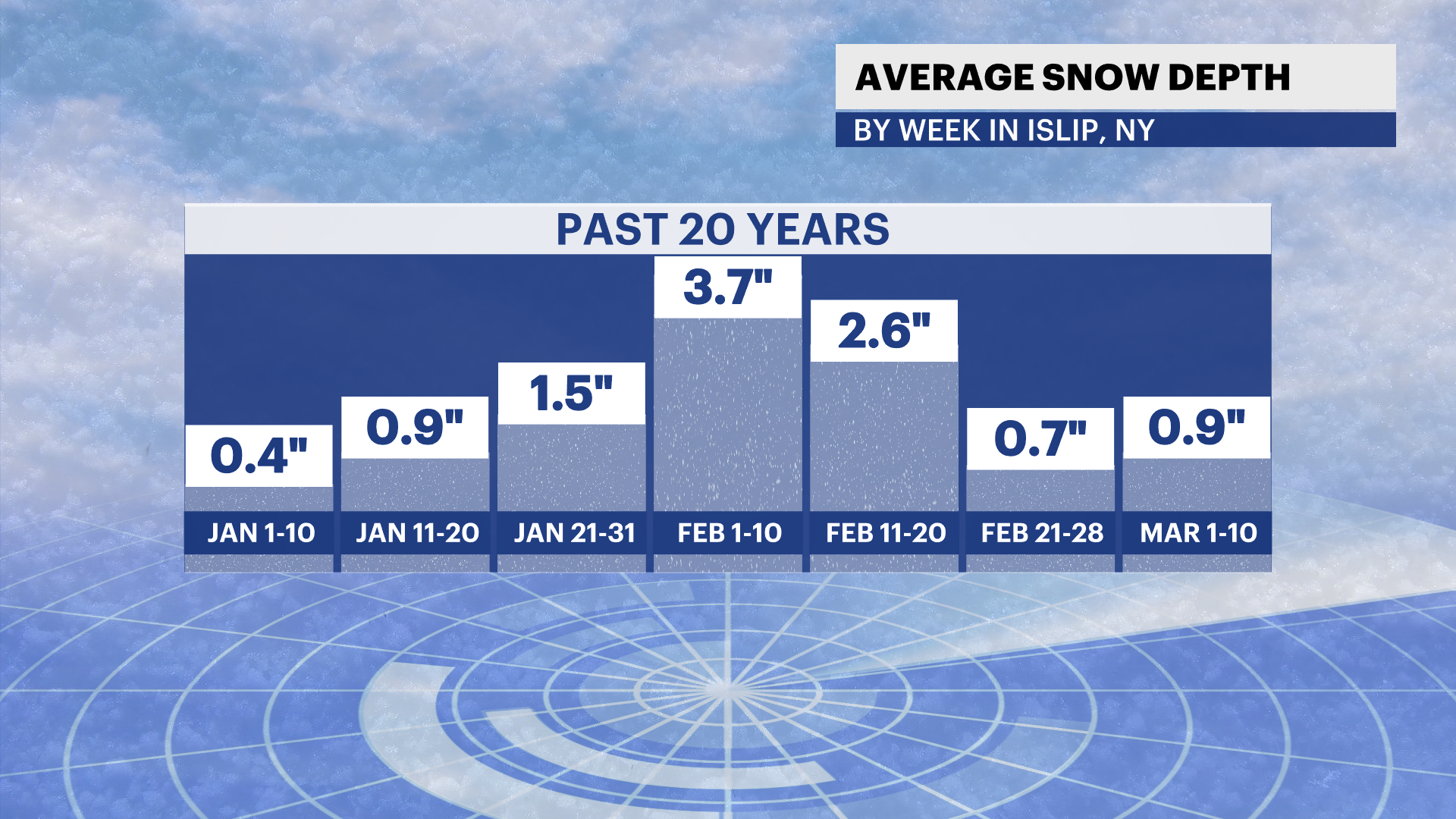
In the 1980s and 1990s, Long Island typically saw the most snow in early winter. The snowpack tends to last longer during these darker and cooler parts of the season, but the overall snow totals were lower than nor’easters are capable of producing today. Although winter temperatures are trending milder on the Island than previous decades, it’s certainly cold enough for snow – and sometimes a lot of it.
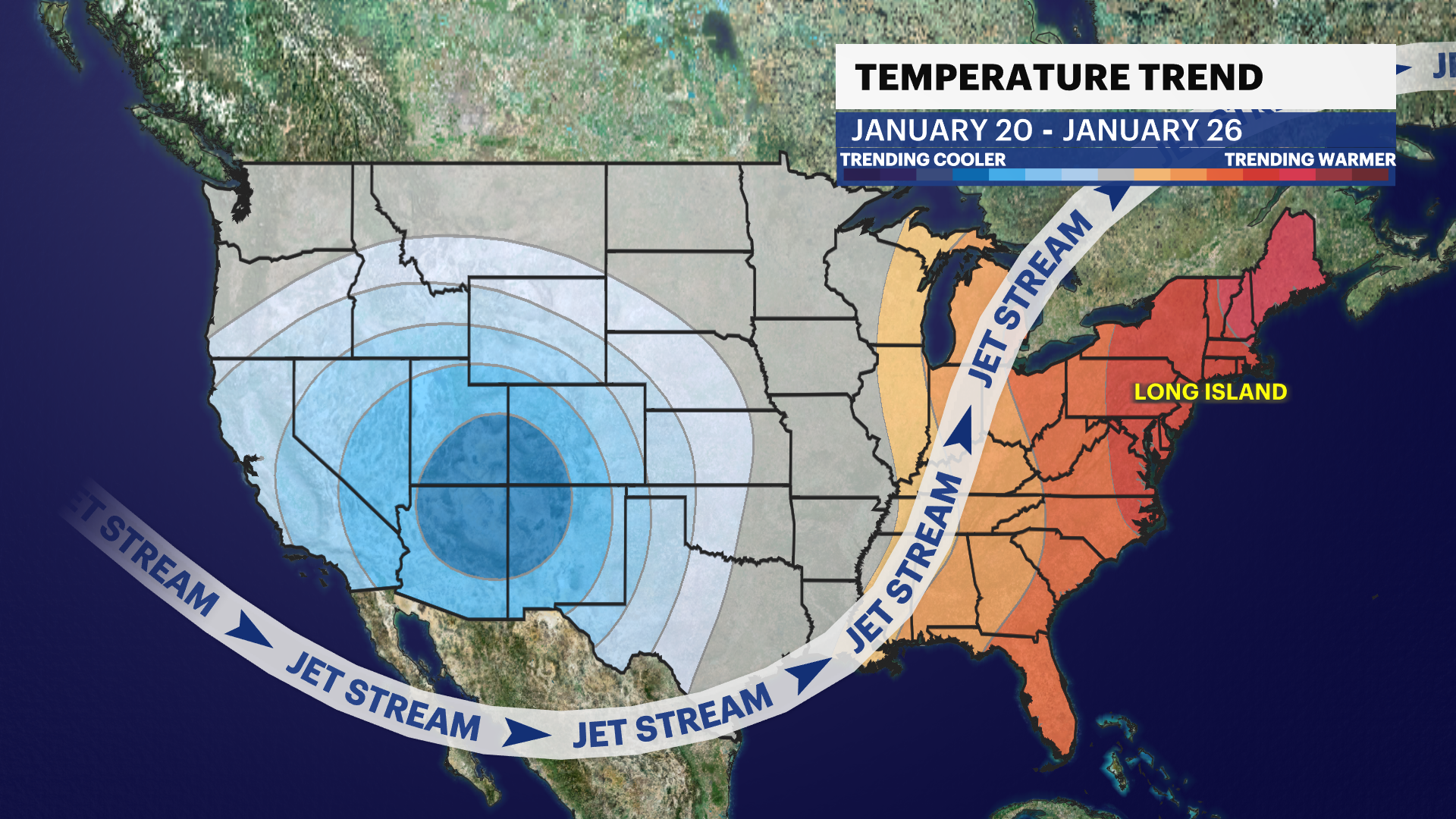
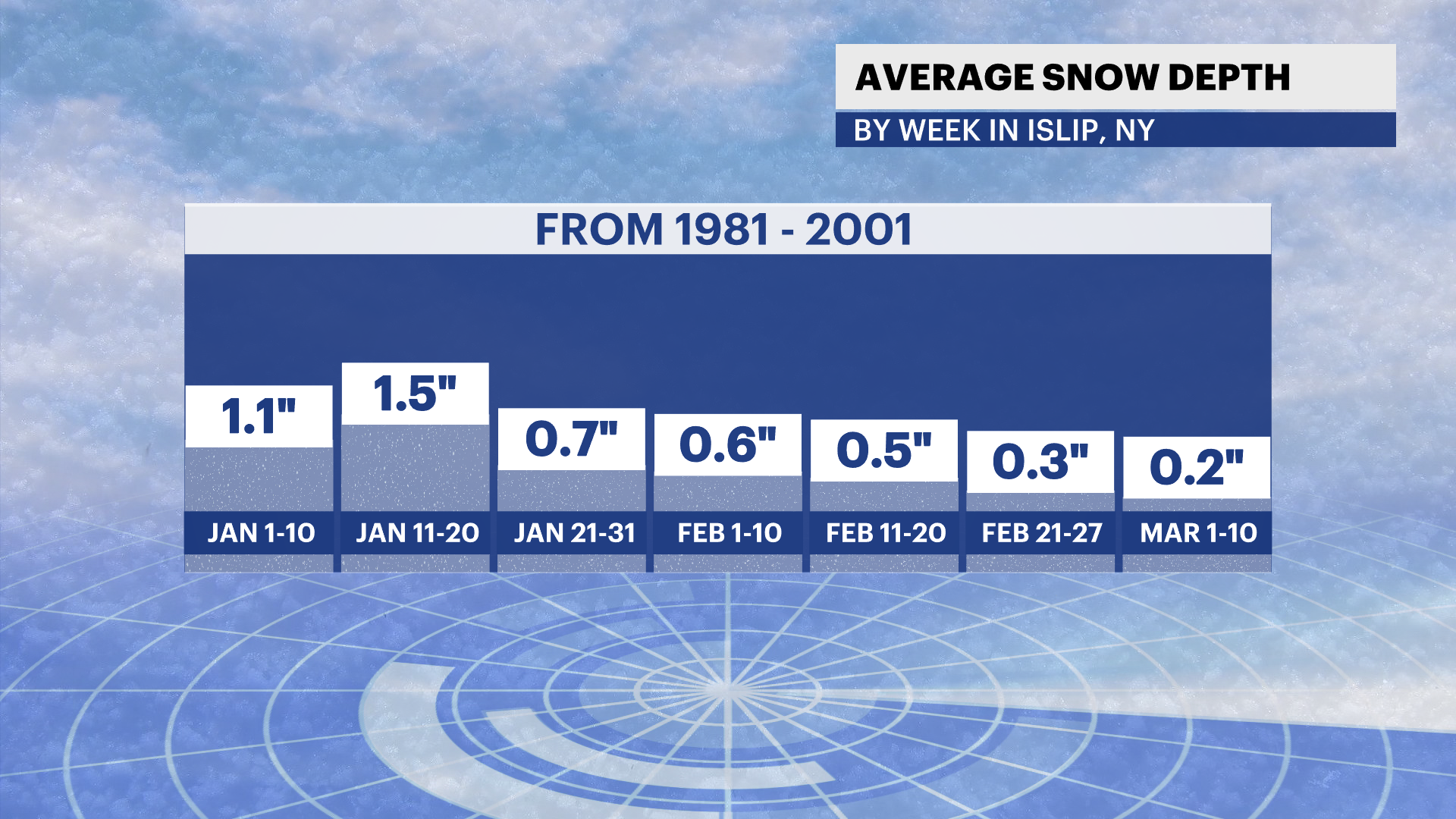
What’s ahead
The general trend for the rest of the month is milder than average, but the biggest snowstorms typically happen in late January through mid-February. The snowiest day was just last year on Jan. 29. It was virtually the only snowstorm that season, but it’s proof that it just takes one storm to bust a snow drought, and there’s plenty of time left in the season!
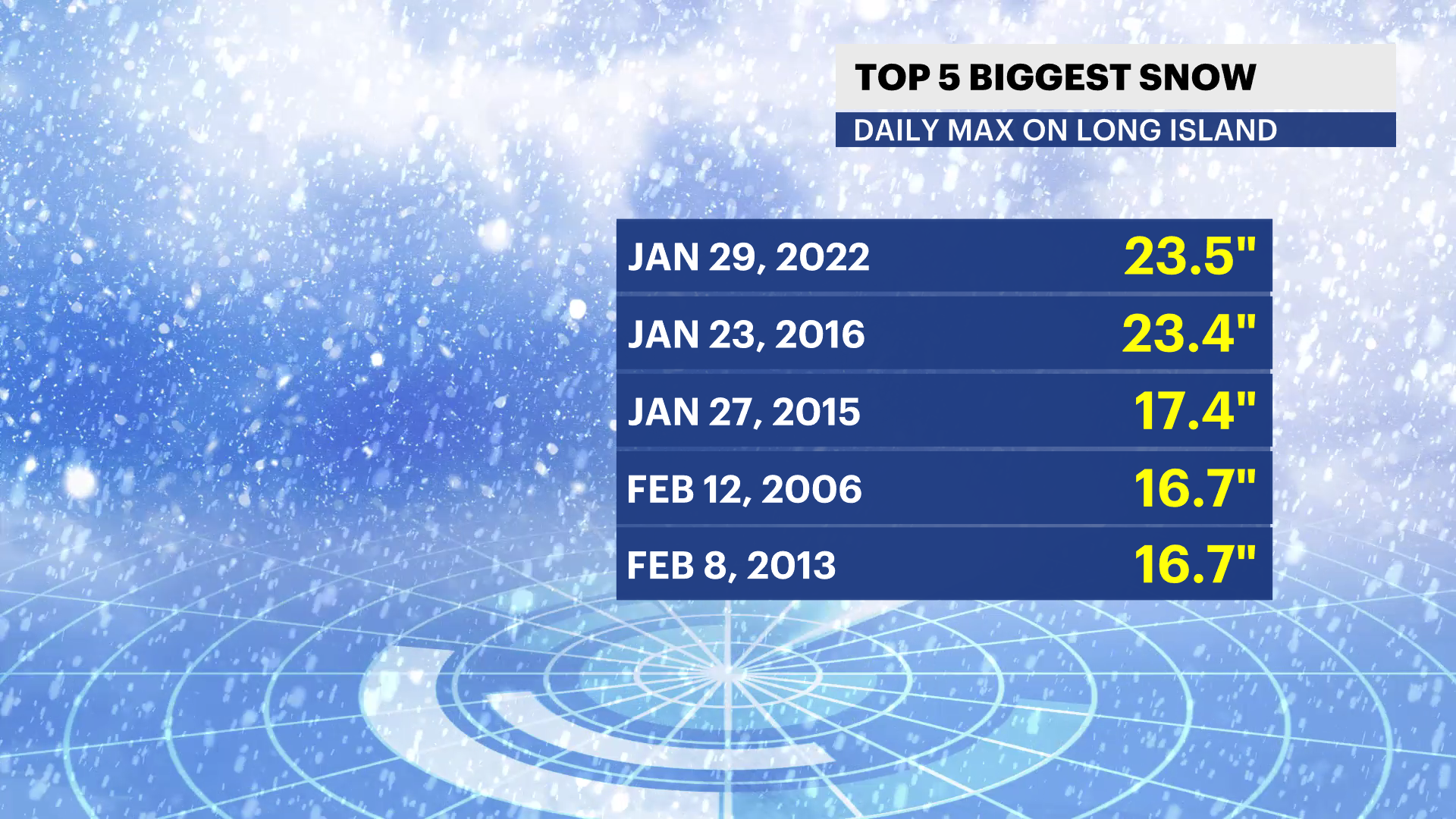
More from News 12
1:49

Storm to bring heavy rain & strong winds across the tri-state
1:45

Village of Patchogue declares state of emergency following overnight snowfall
2:33

Sadly, we will miss the peak of the Geminid meteor shower this year, but we'll get snow instead!
1:11

Are you hoping for a snowy Christmas this year?
1:58

Unseasonably cold weather back to start off the new workweek
